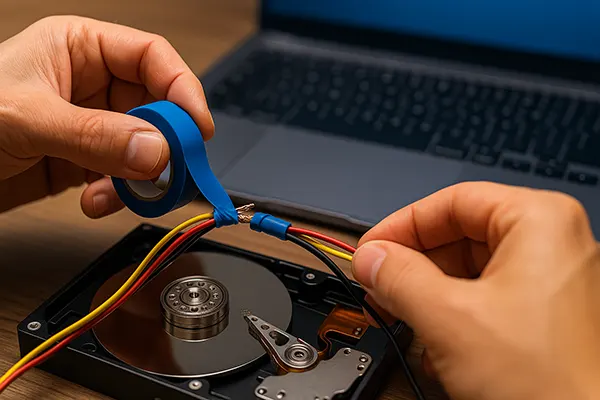
How to Recover Files After Malware Infection: A Step-by-Step Guide
Malware infections can be devastating, especially when they compromise or corrupt important files. Whether you are a business professional or a home user, knowing how to recover data safely and efficiently is essential. This comprehensive guide provides a structured approach to recovering files after a malware attack, based on proven methods and current practices as of February 2025.
Assessing the Damage After Infection
The first step is to determine the type and extent of the malware attack. Some malicious programs are designed to lock files (like ransomware), while others may delete or corrupt data. Understanding what kind of malware infected your system helps define the best course of recovery.
If your files are simply hidden or renamed, recovery is often straightforward. However, if data has been encrypted, you may need to explore decryption tools or backup restoration. Always begin by isolating the affected machine from networks and storage devices to prevent further spread.
Use a trusted antivirus or malware removal tool to identify and remove the threat. Only once the malware is completely eliminated should you proceed with any recovery attempts. Skipping this step could result in re-infection or permanent data loss.
Initial Safety Measures
Disconnect the computer from the internet and any external devices to stop the malware from spreading. Then boot into Safe Mode, which loads only essential system files, reducing the risk of malware interference during diagnostics.
Run a full system scan using an up-to-date malware removal tool. If possible, use a separate clean system to download the software and transfer it via USB. Avoid installing anything new on the infected system until it is confirmed safe.
Document any errors or unusual file behaviour you observe. This information can help identify the specific malware strain, which may be critical if professional assistance or a decryption utility is needed later.
Recovering Files Using System Tools
Once the system is clean, begin recovery using built-in operating system tools. Windows and macOS offer file history and restore points, which can revert files or the system state to a point before the infection.
Windows users should check the “Previous Versions” tab of a file’s properties. If System Restore was enabled, shadow copies of files might be available. On macOS, use Time Machine to browse and recover earlier file versions.
Additionally, temporary files or auto-save backups created by software (such as Microsoft Office or Adobe products) might still be intact. These can be located manually in application folders or recovered using file recovery utilities.
Using Data Recovery Software
If built-in tools don’t help, third-party data recovery software may be effective. Tools like Recuva, EaseUS Data Recovery Wizard, or Disk Drill can scan for deleted or inaccessible files after malware removal.
Always install recovery software on a separate, uninfected device to avoid overwriting recoverable data. Connect the affected drive externally via USB if possible. Run a deep scan and review the results carefully before restoring files.
Bear in mind that success rates vary depending on how much damage the malware caused. If the drive was heavily encrypted or wiped, the likelihood of full recovery may be low without backups.

Preventing Future Data Loss
Recovering your files is only part of the process. Preventing future infections is just as critical. Invest in robust, regularly updated antivirus protection, and schedule regular system scans and software updates.
Implement an automated backup strategy using both local (external hard drives) and cloud-based storage. Ensure backups are not connected permanently to your system, as some malware can infect backup drives as well.
Be cautious with email attachments, links, and downloads. Phishing and malicious sites are common malware delivery methods. Use web filters and email security tools to reduce exposure to threats.
Educating Users and Maintaining Security
For organisations, user education is a powerful tool. Train employees to recognise suspicious emails, use secure passwords, and follow company protocols for handling external devices and data.
Regular security audits, software patching, and network monitoring should be part of your cybersecurity policy. Keep administrative privileges restricted to reduce the impact of potential breaches.
Finally, consider using endpoint detection and response (EDR) tools for real-time threat monitoring and incident response. These solutions provide a higher level of insight and control, especially in business environments.
Popular topics
-
 Microkernels in Smartphones: The Future of Mobile Securit...
Microkernels in Smartphones: The Future of Mobile Securit...In recent years, discussions around microkernel-based operating systems have gained …
-
 What is the latest version of 3DS Max
What is the latest version of 3DS MaxFor the creation of a wide variety of projects, including …
-
 The Future of Foldable Smartphones: Engineering Challenge...
The Future of Foldable Smartphones: Engineering Challenge...Foldable smartphones have transitioned from futuristic prototypes to commercial products, …
-
 Page Weight Desktop Software
Page Weight Desktop SoftwareThis program is actively used today for SEO promotion. Its …
-
 Modular PC Architecture: Will Removable GPUs and CPUs Bec...
Modular PC Architecture: Will Removable GPUs and CPUs Bec...The idea of modular computing has captivated both tech enthusiasts …
